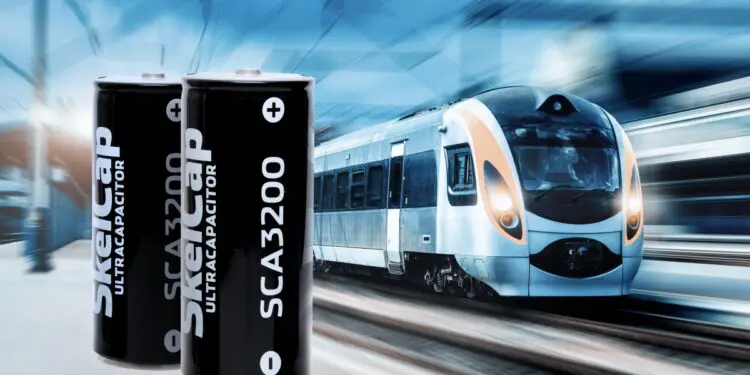Graphene-info published an article on Skeleton Technologies’s graphene-based supercapacitors and its technology developments based on its talk with the company VP of automotive products, Sebastian Pohlmann.
Germany-based Skeleton Technologies has been on the forefront of graphene-based supercapacitors development for many years, and the company recently made some major announcements, including a large (>€70 million) financing round, the super-battery project and several strategic customers and projects – including ones with Medcom, Skoda, CAF, Wrightbus and Marubeni.
Skeleton produces graphene-enhanced supercapacitors, based on its curved-graphene technology (we will explain that below). According to the company, its capacitors are the best performing capacitors in the world, with the highest density – and by a large margin over its competition (see this US Navy test that compares Skeleton’s supercaps to four other types).
The enhanced performance is behind Skeleton’s extremely fast growth in the last few years, as the company supplies its solutions to a wide range of applications. The company reports a back log of over $200 million in products that it will supply in the next years. To support its fast growth, Skeleton is developing new production technologies and scaling up its capacity with support from the German government. Skeleton has tripled its revenues for three years in a row up to 2020, and in 2021 it hopes to continue its fast growth.
Skeleton has already raised over 170 million Euro in private funding rounds, and received numerous grants and project awards. With these impressive orders and financing rounds, we hope the company may become public via an IPO in the future.
Skeleton is targeting four main markets: the automotive one (cars), transportation (trains, trams, buses, etc.), industrial systems (such as oil and gas systems, construction, medical and more) and the power grid. It sees good demand and growth in sales across all of its markets.
Two popular applications today are wind pitch control and grid energy storage solutions. Wind pitch control systems are traditionally powered by lead-acid batteries, but newer turbines are adopting supercapacitors which outperform the old solutions. Skeleton is supplying its capacitors to many such turbines, and this market will likely continue to grow in the future.
Another important application lies in the grid. Large power banks (up to 100Mw) are used today to regulate the grid, and these installations need to release their power quickly, which is where Skeleton’s supercapacitors come into play.
As we said, the automotive market is of great interest to Skeleton, even though currently its sales do not represent a large portion of the company’s revenues. The company can share that it has started to supply supercapacitors to a leading automotive maker in Germany, that will use these in future active suspensions.
In future cars, however, Skeleton sees applications in brakes buffer power, and also in lower voltage applications – to take over the car’s 12V power supply and replace the currently-used Lead-Acid battery. Supercapacitors will outperform the batteries, and also are more environmentally friendly.
Looking even further ahead, Skeleton sees a big potential in hydrogen-powered cars (fuel cells) and also in smaller vehicles that will have small batteries and so will make use of the supercapacitors for brake power generation.
One of Skeleton’s key projects is its Superbattery, which also attracted a Letter of Intent from a major automotive OEM, in total worth of > 1$ billion. It will be several years before this technology enters the market, and the goal is to extend the performance of Skeleton’s supercapacitors to the point where these can be adopted as the power bank of hybrid cars. The technology increases energy density by almost a factor of 10x while still enabling fast charging and the high power density which supercapacitors are known for.
Skeleton’s main technology is its curved graphene, which is a type of graphene, but not a standard one – the material is nothing like the single-layer graphene sheets, but rather resembles crumbled up graphene, resulting in nanoscale 3D objects. The curved graphene retains the properties of graphene (high conductivity and large surface area) but can be inserted into electrodes much more easily compared to other graphene types. This enables Skeleton to achieve the high performance in its supercapacitors.































